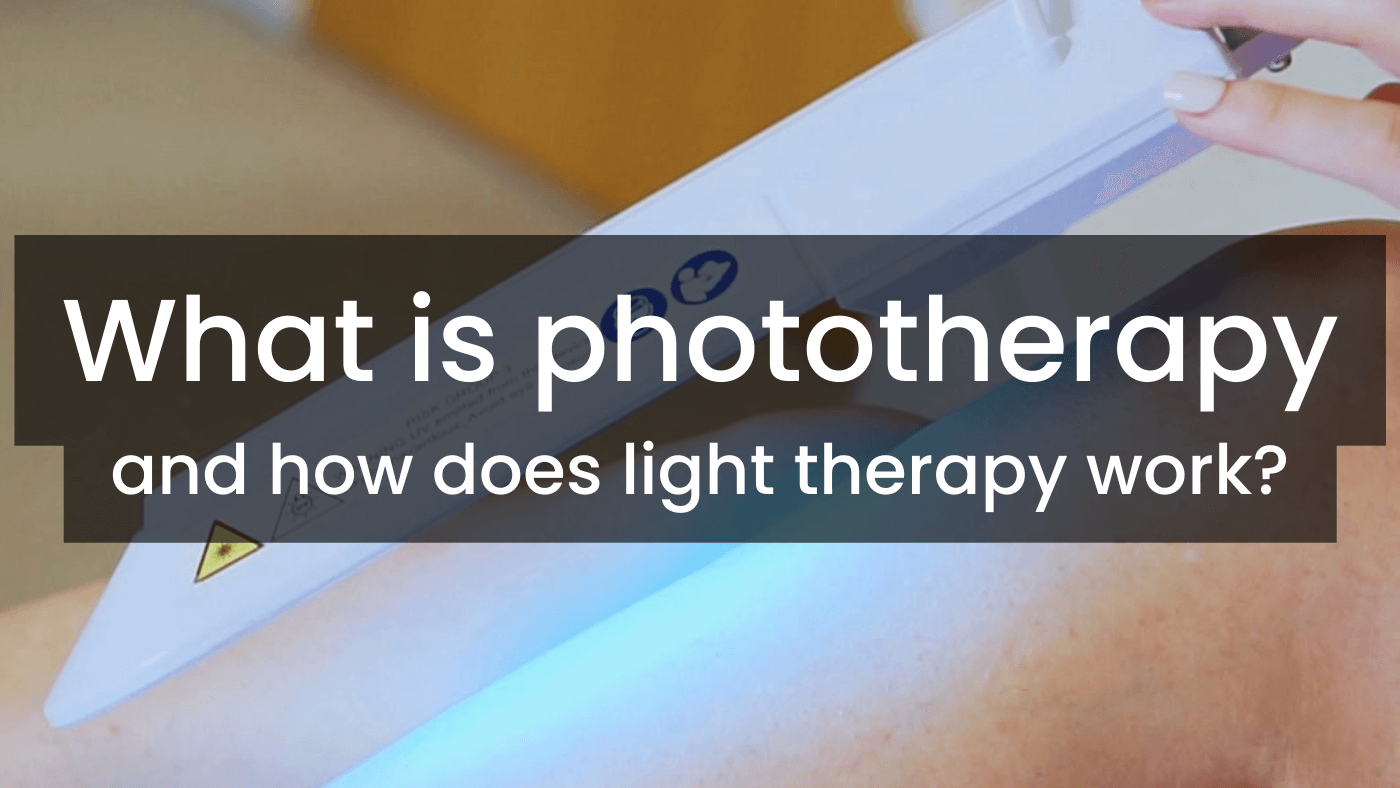What is phototherapy and how does light therapy work?

What is phototherapy?
Phototherapy is the use of ultraviolet (UV) light for medical treatment. Ultraviolet light is an invisible component of natural sunlight.
Ultraviolet light is made up of different wavelengths. During light therapy, two different types of UV wavelengths are used - ultraviolet A (UVA) and ultraviolet B (UVB).
What is Narrowband UVB phototherapy?
Narrow-band UVB phototherapy uses a small part of the UVB spectrum compared to broad-band UVB which uses the full spectrum. Narrow-band UVB limits the light wavelengths used in treatment to just 311-313 nanometers (1). This is beneficial as it avoids some of the harmful wavelengths.
Compared with broadband UVB:
- Exposure times are shorter but of higher intensity
- The course of treatment is shorter
- It is more likely to clear the skin condition
- Longer periods of remission occur before it reappears
How does phototherapy work?
Ultraviolet rays penetrate the skin and slow the growth of affected skin cells. UVB phototherapy treatment is the process of exposing the skin to artificial UVB rays from a light source for a certain amount of time on a regular basis.
What is phototherapy used for?
Phototherapy can be used for a variety of conditions including increasing vitamin D3, as well as treating skin diseases.
Narrow-band UVB is particularly beneficial for treating eczema, psoriasis and sebaceous dermatitis.
UVB phototherapy for eczema
Eczema, also known as atopic dermatitis, is a type of skin inflammation. It results in itchy, red, swollen and cracked skin.
One way to treat eczema is exposure to broad or narrow-band UVB light, which may decrease the severity and frequency of flare-ups (2).
Our article on UVB phototherapy for eczema delves into the research further.
UVB phototherapy for psoriasis
Psoriasis is an autoimmune disease. It is characterised by raised areas of red, pink or purple, dry, itchy and scaly skin.
Phototherapy is a common treatment for psoriasis, with narrow-band UVB wavelengths of 311-313 nanometers being the most effective (3).
We share the research findings of UVB phototherapy for psoriasis in our learning hub.
UVB phototherapy for seborrhoeic dermatitis
Seborrhoeic dermatitis is a skin condition that presents as red, flaky and itchy skin in areas where sebaceous glands are plentiful.
Some small-scale studies suggest UVB phototherapy can be an effective and helpful treatment for people with seborrhoeic dermatitis (4).
More research is needed into UVB phototherapy for seborrhoeic dermatitis, which we discuss more in our article in the learning hub.
How long does it take for phototherapy to work?
The location of the skin condition, severity, and sensitivity of the skin can all impact the number of sessions and the length of time it takes for phototherapy to work.
People usually undergo between three and five light therapy sessions weekly for around two to three months. But, usually, improvement is seen within two to four weeks, depending on the type of light therapy used (5).
Can you do phototherapy at home?
You can do phototherapy at home, which is often more accessible, cheaper, and more convenient. A 2008 study from the Netherlands found that UVB phototherapy administered at home is as equally safe and effective, both clinically and for quality of life, as UVB phototherapy in an outpatient setting (6).
Is home phototherapy safe?
Home phototherapy can be safe, but it is essential to be aware of any side effects or risks. Like any light therapy treatment, there is a risk of mild sunburn, which can be resolved by adjusting the treatment time length and frequency.
Narrow-band UVB causes fewer side effects than broad-band UVB or UVA light therapy (3).
How do I do phototherapy at home?
One of the main benefits of having phototherapy treatment at home is the flexibility of your treatment schedule. But, it is essential to keep a regular schedule to see the benefits.
Start with just 30 seconds of exposure, and gradually increase the time you expose your skin to narrowband UVB light.
Here is a suggested treatment schedule:
- Wear your protective goggles
- Treat each area of concern for 30-seconds
- Wait for a minimum of 24 hours or until any redness subsides
- Repeat the treatment, adding on 10% more time each time (or repeat the last treatment time)
- Repeat for 15-30 seconds until the skin has cleared
At Care Lamps, Our Derma UVB has complete instructions to help you treat your skin with UVB phototherapy at home.






Leave a comment